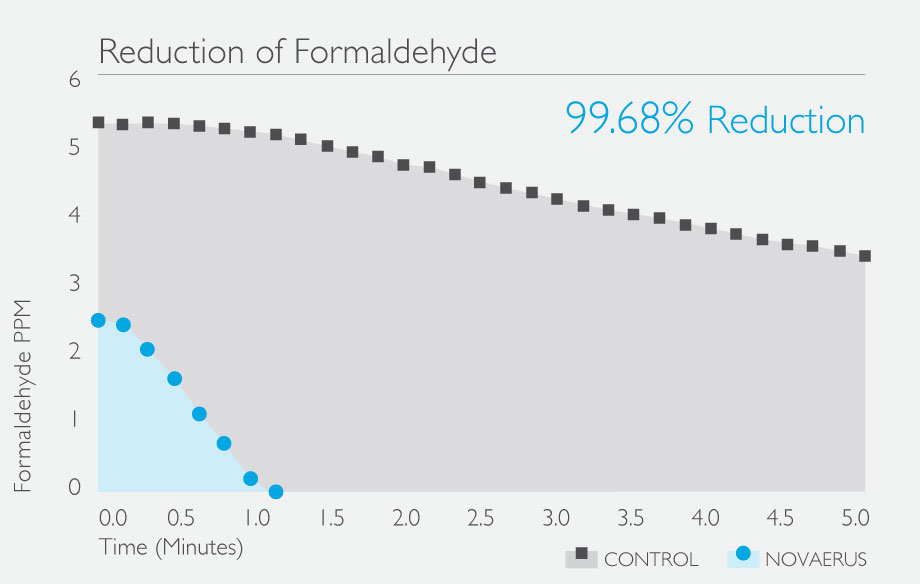Formaldehyde Reduction
- Authors
-
Jamie Balarashti, Dan Merchant, Zach Conley
- Facility
-
Aerosol Research and Engineering Laboratories, Kansas
- Download
- Full Report
Background
This in vitro study characterized the removal efficacy of formaldehyde by the Defend NV1050 / Pro XL system. The Defend 1050 / Pro XL system is designed to eliminate harmful gases in order to purify rooms and create safe environments for occupants. The study included three (3) trials and a control run against formaldehyde.
Methods
Formaldehyde gas was released into a sealed chamber while the monitoring of concentration was logged with specialized detectors. For the control trials, the Defend 1050 / Pro XL remained outside the chamber, and the gases were allowed to dissipate naturally over time. The Defend 1050 / Pro XL was moved inside the chamber for the test trials, the chamber was refilled with test gases and the Defend 1050 / Pro XL turned on once desirable concentrations of the gases had been reached. Chamber control trial data was subtracted from Novaerus trial data to yield net log reduction in the chamber for each challenge.
Results
The Defend 1050 / Pro XL proved to be exceedingly effective at removing formaldehyde from its environment. The four tests had an average net LOG reduction of 2.52 LOG and formaldehyde levels reached 0.00 ppm in an average of 1.1 minutes. In this instance, the main cause preventing a greater net LOG value was the lower starting concentration.
For formaldehyde, the Defend 1050 / Pro XL system has an equivalent air exchange rate of 641.21 eqACH, a CADR of 6038.10 cfm, and an EPA rating of 16.10 cfm/watt.

CONTACT US
USA Headquarters
Stamford, Connecticut
Call: 1 866 508 1118 Email: info@wellairsolutions.com
Ireland Headquarters
DCU Innovation Campus Old Finglas Road Glasnevin, Dublin 11
Call: +353 1 907 2750 Email: info@wellairsolutions.com